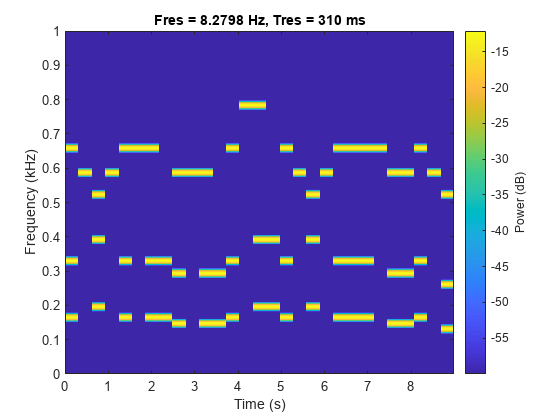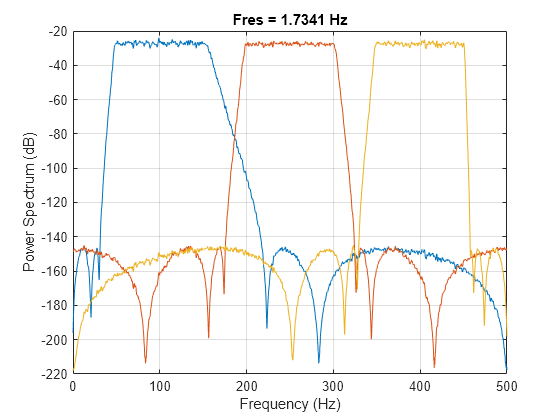bandpass
对信号进行带通滤波
语法
说明
y = bandpass(___,Name=Value)
[ 还返回用于对输入进行滤波的 y,d] = bandpass(___)digitalFilter 对象 d。
不带输出参量的 bandpass(___) 绘制输入信号并叠加滤波后的信号。
示例
输入参数
名称-值参数
输出参量
详细信息
版本历史记录
在 R2018a 中推出
![Figure contains 2 axes objects. Axes object 1 with title Bandpass Filtering (Fpass = [100 200] Hz), xlabel Time (s) contains 2 objects of type line. These objects represent Original, Filtered. Axes object 2 with xlabel Frequency (Hz), ylabel Power Spectrum (dB) contains 2 objects of type line. These objects represent Original, Filtered.](../../examples/signal/win64/BandpassFilteringOfTonesExample_01.png)

![Figure contains 2 axes objects. Axes object 1 with title Bandpass Filtering (Fpass = [230 450] Hz), xlabel Time (s) contains 2 objects of type line. These objects represent Original, Filtered. Axes object 2 with xlabel Frequency (kHz), ylabel Power Spectrum (dB) contains 2 objects of type line. These objects represent Original, Filtered.](../../examples/signal/win64/BandpassFilteringOfMusicalSignalExample_02.png)




